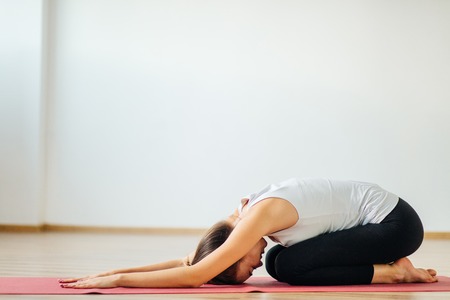Introduction to Yoga in the UK Context
Yoga, a practice with origins tracing back thousands of years to South Asia, has experienced a remarkable journey of cultural adaptation and integration within the United Kingdom. Over recent decades, yoga has evolved from a niche activity associated primarily with spiritual seekers to a mainstream component of British health, wellness, and education. According to the 2023 Sport England Active Lives Survey, over 1.3 million adults in England alone reported participating in yoga at least once a week, highlighting its widespread appeal. This growth is mirrored in British schools and community settings, where yoga is increasingly recognised for its physical and mental health benefits. Today, more than 30% of primary and secondary schools across the UK offer some form of yoga or mindfulness-based movement as part of their curriculum or extracurricular activities, according to data from the British Wheel of Yoga. This shift reflects not only a broader societal emphasis on holistic well-being but also an openness to embracing practices rooted outside traditional Western paradigms. As yoga continues to gain traction among diverse age groups and communities, it serves as a compelling example of how global traditions can be thoughtfully adapted to local contexts within Britain.
2. Cultural Integration and Local Adaptations
Yoga, with its roots in ancient Indian philosophy, has undergone significant cultural adaptation as it has become embedded within British schools and communities. To ensure that yoga is accessible and meaningful to a diverse population, educators and organisations have taken deliberate steps to align practices with local customs, educational objectives, and the sensitivities of various cultural groups.
Alignment with Educational Goals
British schools have integrated yoga into their curricula not just as a physical activity, but also as a tool for mental health support, emotional regulation, and social development. This aligns with the UK’s emphasis on holistic education and student wellbeing. For example, mindfulness components are often prioritised over spiritual or religious elements, allowing yoga to fit comfortably within secular school environments.
Adaptation Strategies in Practice
| Aspect | Traditional Yoga | British School Adaptation |
|---|---|---|
| Language Used | Sanskrit terms and mantras | English instructions; minimal or no use of Sanskrit |
| Focus Areas | Spiritual growth and meditation | Mental wellbeing, stress reduction, physical fitness |
| Session Structure | Longer sessions (60+ minutes) | Shorter sessions (15-30 minutes) suitable for timetables |
| Cultural Sensitivity | Inclusion of religious symbolism | Avoidance of religious symbols; secular presentation |
| Inclusivity | May not address disabilities or SEN needs specifically | Differentiated instruction for diverse abilities and backgrounds |
Respecting Cultural Sensitivities and Diversity
The UK’s multicultural landscape necessitates sensitivity towards different religious and cultural beliefs. Schools have tailored yoga sessions by removing chanting or references that might be perceived as religious. Instead, there is a focus on universal values such as mindfulness, resilience, and self-care. Additionally, instructors receive training on inclusive language and are encouraged to adapt postures for students of all abilities.
Community Engagement and Feedback Mechanisms
Many schools involve parents and community leaders in the adaptation process, ensuring transparency and addressing concerns proactively. Feedback mechanisms—such as surveys or consultation meetings—help refine programmes so they remain culturally appropriate while supporting educational aims.

3. Yoga in the British School System
In recent years, yoga has increasingly found its way into both state and independent schools across the UK, reflecting a broader cultural adaptation that aligns with national well-being objectives. Several targeted initiatives have been launched to support this integration. For instance, the Yoga in Schools Programme, endorsed by organisations such as the British Wheel of Yoga, provides certified instructors and structured lesson plans tailored for children and adolescents. These programmes often focus on mindfulness, stress reduction, and physical health—key priorities identified in government guidelines such as the Department for Education’s (DfE) Physical Health and Mental Wellbeing curriculum.
Pilot projects funded by local councils or charitable bodies, including the Mindfulness in Schools Project (MiSP), have further demonstrated the value of yoga-based interventions. Many of these pilots involve direct partnerships with schools to assess outcomes through measurable data, such as reductions in behavioural incidents and improvements in student engagement. Independent schools have also adopted bespoke yoga modules within their broader pastoral care strategies, aiming to foster resilience and emotional intelligence among pupils.
Feedback from students is overwhelmingly positive; many report increased concentration, reduced anxiety, and a greater sense of calm during school hours. Teachers have echoed these findings, noting improved classroom dynamics and enhanced readiness to learn. Collectively, these efforts illustrate how yoga has been culturally adapted to fit the unique needs of British school communities while supporting wider policy aims focused on holistic child development.
4. Community-Based Yoga Initiatives
Across the UK, community-based yoga initiatives have played a pivotal role in making yoga accessible and relevant to diverse British populations. These programmes, often spearheaded by community centres, charities, and local councils, aim to break down social, cultural, and economic barriers that may prevent individuals from participating in traditional yoga settings. By tailoring yoga classes to reflect the unique needs of local demographics—whether based on age, ethnicity, socio-economic background, or physical ability—these initiatives contribute significantly to the integration of yoga into British daily life.
Case Studies: Inclusive Yoga in Action
| Organisation | Target Demographic | Key Adaptations | Outcomes |
|---|---|---|---|
| Birmingham Community Centre Network | Ethnically Diverse Families | Bilingual instructors; culturally sensitive curriculum; sessions aligned with religious observances | Increased participation from South Asian communities; improved community cohesion |
| Mental Health UK (Charity) | Individuals with Anxiety & PTSD | Trauma-informed teaching; focus on gentle movement and mindfulness; free sessions funded by donations | Reported reduction in anxiety symptoms; higher engagement among vulnerable adults |
| Lambeth Borough Council | Seniors & Disabled Residents | Chair yoga and accessible venues; transport support; classes scheduled during daytime hours | Enhanced mobility for seniors; increased social inclusion among disabled participants |
The Importance of Cultural Sensitivity and Accessibility
Community-driven approaches emphasise cultural sensitivity by consulting with local leaders and adapting class structures around religious holidays or dietary restrictions. Language support is also frequently provided to ensure comprehension and comfort among non-native English speakers. Such adaptations foster a sense of belonging and respect, which is crucial for encouraging sustained participation.
Sustainability Through Local Partnerships
Partnerships between local councils, schools, health services, and third-sector organisations underpin the sustainability of these programmes. Funding from grants or public health budgets allows for subsidised or free classes, while ongoing feedback mechanisms help refine offerings to better meet evolving community needs.
Data-Driven Impact Assessment
Many initiatives incorporate regular monitoring and evaluation, using attendance data, participant surveys, and qualitative interviews to measure outcomes such as wellbeing improvements and social connectedness. For instance, a 2023 report by the Yoga in the Community Alliance found that 78% of participants in council-run yoga schemes reported an improvement in mental health after three months of regular attendance.
5. Perceptions and Evidence-Based Outcomes
A Data-Driven Look at Public and Educator Attitudes
Yoga’s integration into British schools and communities has not occurred in a vacuum. Recent surveys by the Youth Sport Trust and the British Educational Research Association indicate that over 70% of UK educators view yoga as a positive addition to the school curriculum, especially for supporting student wellbeing. Among parents, acceptance has steadily increased; a 2022 YouGov poll found that nearly half of British parents now consider yoga an acceptable activity in primary and secondary schools, up from just 28% a decade ago.
Health Benefits: What Does the Evidence Say?
Multiple UK-based studies underscore yoga’s tangible health benefits for children and adolescents. For example, research published in the journal ‘Child: Care, Health and Development’ (2021) revealed that students participating in weekly yoga sessions reported a 32% reduction in stress-related symptoms compared to control groups. NHS pilot programmes in London and Manchester also report improved flexibility, balance, and sleep quality among young participants.
Educational Outcomes: Improving Focus and Behaviour
From an educational perspective, the introduction of yoga aligns with Ofsted’s emphasis on holistic development. A controlled study conducted across several London state schools (2019–2022) showed that classes incorporating yoga reported fewer behavioural incidents and higher average scores on attention-span assessments. Teachers involved in these programmes noted improvements in classroom atmosphere and pupil engagement.
Social Impact: Building Community Cohesion
The social benefits of yoga are increasingly recognised within British communities. Programmes such as ‘Yoga for All’ in Birmingham have fostered intergenerational participation, bringing together families from diverse backgrounds. Evaluations by local councils highlight enhanced social cohesion, with participants reporting increased feelings of belonging and reduced social isolation—key factors in community resilience according to Public Health England.
The Evidence Is Clear
In summary, data-driven insights strongly support the inclusion of yoga within British schools and communities. The shift in public perception is backed by robust evidence of health, educational, and social gains—demonstrating that yoga’s cultural adaptation is both welcomed and substantiated by measurable outcomes.
6. Challenges and Ongoing Debates
As yoga continues to become more integrated into British schools and communities, it faces several challenges that reflect broader societal debates. The question of inclusivity remains at the forefront. While yoga is promoted as accessible to all, some parents and community members have raised concerns regarding its perceived religious or spiritual roots. This has occasionally led to pushback from families who feel that yoga may conflict with their personal beliefs or cultural backgrounds. Schools must navigate these sensitivities carefully, often by emphasising the secular, health-focused aspects of yoga in their curricula.
Another ongoing debate centres on cultural appropriation. Critics argue that the widespread adoption of yoga in Britain can sometimes strip away its historical and cultural significance, reducing it to a mere fitness trend. There is increasing discussion about whether British institutions should take steps to honour the origins of yoga—such as including education about its Indian heritage or consulting with practitioners from South Asian communities—so as not to dilute or misrepresent its deeper meanings. This debate reflects a growing awareness within Britain around respecting cultural diversity and ensuring that practices are introduced thoughtfully rather than superficially.
The quality of instruction also poses a challenge for British schools and local organisations. With the popularity of yoga rising rapidly, there is considerable variation in the training and qualifications of those teaching it. The lack of a standardised accreditation system raises concerns about both safety and effectiveness, especially when working with children or vulnerable adults. Many educational authorities and local councils are now calling for clearer guidelines and robust training pathways to ensure instructors are appropriately qualified, with an understanding not only of physical postures but also safeguarding policies relevant to UK contexts.
In summary, while yoga’s integration into British life offers many benefits, ongoing debates around inclusivity, cultural sensitivity, and instructor qualifications highlight the need for continued reflection and adaptation. Addressing these challenges will be essential for ensuring that yoga remains a positive force within British schools and communities.
7. Future Directions for Yoga in the UK
As yoga continues to carve out its place within British schools and communities, it is essential to consider the future pathways that will shape its role and impact. One key trend is the increasing emphasis on evidence-based practice. Schools and local authorities are now seeking robust data to demonstrate the benefits of yoga on students’ mental health, concentration, and physical wellbeing. This has prompted ongoing research collaborations between universities, public health bodies, and educational institutions to quantify outcomes such as reduced anxiety levels, improved attendance rates, and enhanced classroom behaviour.
Policy directions are also evolving. The Department for Education’s growing focus on holistic wellbeing and mental health in schools opens new opportunities for integrating yoga into core curricula rather than as an extracurricular activity. There is a movement towards formal training and accreditation for yoga teachers working with children and young people, ensuring that practice standards remain consistent and culturally sensitive across the UK’s diverse population.
In community settings, councils are recognising the value of accessible wellness programmes, particularly for marginalised or vulnerable groups. Funding initiatives that support yoga sessions in community centres, libraries, and parks are becoming more common, reflecting a broader societal shift towards preventative health care. Partnerships with local NHS trusts and charities further extend yoga’s reach to those who may benefit most from its stress-relieving and social inclusion potential.
Looking ahead, emerging opportunities include digital expansion—online classes tailored for schools and community groups—and culturally adapted resources that reflect Britain’s multicultural society. Initiatives aimed at breaking down barriers to participation, such as subsidised classes or programmes delivered in multiple languages, will be crucial for making yoga truly inclusive.
Ultimately, the future of yoga in the UK depends on sustained investment in quality provision, continued research into its effectiveness, and thoughtful adaptation to local needs. By building on current successes and proactively addressing challenges, yoga can become an integral component of British educational and community life—promoting resilience, wellbeing, and social cohesion for generations to come.


